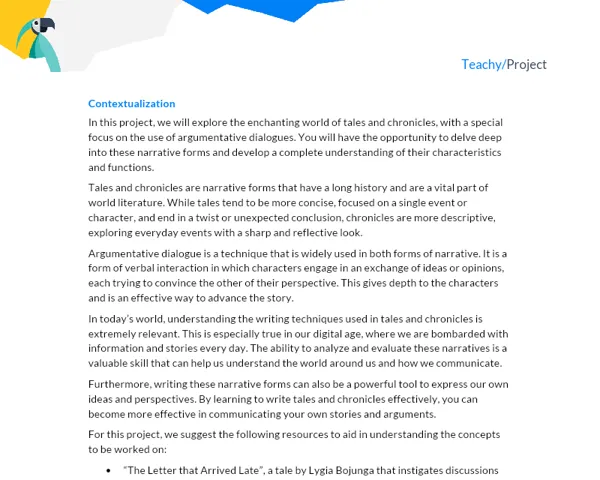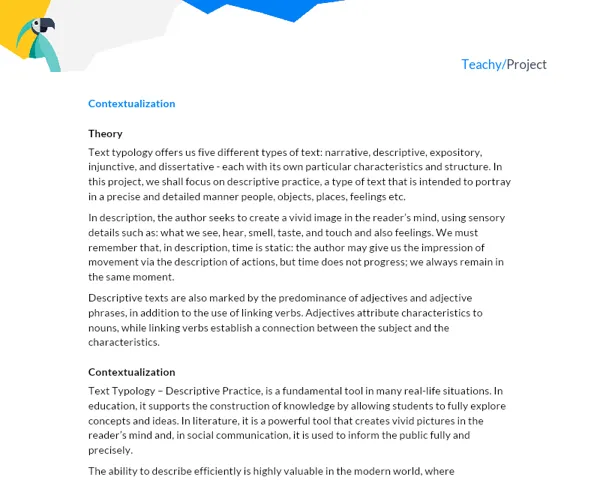Contextualization
In the study of the Portuguese Language, understanding the structures that compose it is fundamental for the construction of a cohesive and coherent discourse. Among these structures, the subject and the predicate are undoubtedly the main components of any sentence, and their understanding is the basis for the improvement of written and oral expression. The subject is the element that performs or undergoes the action expressed by the verb. The predicate, in general, says something about the subject, containing the verb that is linked to it.
In this project, we will focus on the study of these two concepts: subject and predicate, their classifications, identifications in the text, and constitution. For this, we will delve into the distinction between the types of subjects (simple, compound, and hidden) and the types of predicates (verbal, nominal, and verb-nominal). These concepts will be the basis for our practical activity, which will aim not only at recognizing these structures but also at applying this knowledge in the creation of original texts.
Language is a powerful tool that we use daily to express our thoughts and emotions, to tell stories, and to interact with the people around us. Understanding the nuts and bolts of a sentence, such as the subject and the predicate, can greatly enhance students' writing and speaking skills. They can make their communication more clear and precise, and they can also more effectively express their ideas and thoughts.
To delve deeper into the concepts that will be addressed, we recommend the following study sources:
- CEREJA, William Roberto; MAGALHÃES, Thereza Cochar. Português: Linguagens. 8th ed. São Paulo: Atual Editora, 2005.
- CUNHA, Celso; CINTRA, Lindley. Nova gramática do português contemporâneo. 5th ed. Rio de Janeiro: Lexikon, 2008.
- Website Só Português: Subject and Predicate
- YouTube video lesson: Subject and Predicate
Practical Activity: "Storytellers: Subject and Predicate in Action"
Objective
The objective of this project is to create a deeper understanding of sentence structure, particularly the subject and the predicate, through the creation of an original and engaging story. This activity will allow students to apply theoretical concepts in a practical and fun way, stimulating creativity and teamwork.
Activity Description
Groups will create an original story, approximately 10 pages long, that demonstrates the correct use of subjects and predicates, according to the specified criteria. The story should be written in such a way that each sentence is predominantly characterized by a specific type of subject or predicate.
Materials Needed
- Notebook and pen or computer with word processor for writing the story
- Grammar books or internet access for research and consultation
Activity Steps
- Form groups of 3 to 5 students.
- Research the concepts of subject (simple, compound, and hidden) and predicate (verbal, nominal, and verb-nominal).
- Start a brainstorming session for story ideas. Remember, the story should be original and creative.
- Write a story outline, dividing it into parts or chapters, assigning each part to a specific demonstration of subject or predicate.
- After the outline, begin writing the story, always attentive to the correct and varied use of subjects and predicates.
- Review the story to ensure that the concepts are being applied correctly.
- Finalize the story and prepare for the oral presentation.
Project Deliverables
The final product of this project will be a written story and an oral presentation of the work. The story should be delivered in the form of a report, following the structure below:
-
Introduction: Briefly contextualize the general plot of the story and the reason each chapter focuses on a different type of subject or predicate. Explain the importance of learning these concepts.
-
Development: Present the written story, with each chapter clearly indicated and explained. At the end of each chapter, explain how subjects and predicates were used, relating them to the theory.
-
Conclusions: Discuss the difficulties encountered in applying the concepts during the writing of the story, what was learned during the process, and how this knowledge can be applied in the real world.
-
Bibliography: References to the materials and sources used for theoretical research and for writing the story.
The story and the presentation will be evaluated based on the correct application of concepts, the creativity of the plot, and teamwork collaboration. In addition to the written submission, each group will make an oral presentation of the story to the class, explaining how the concepts of subject and predicate were incorporated into the plot.



